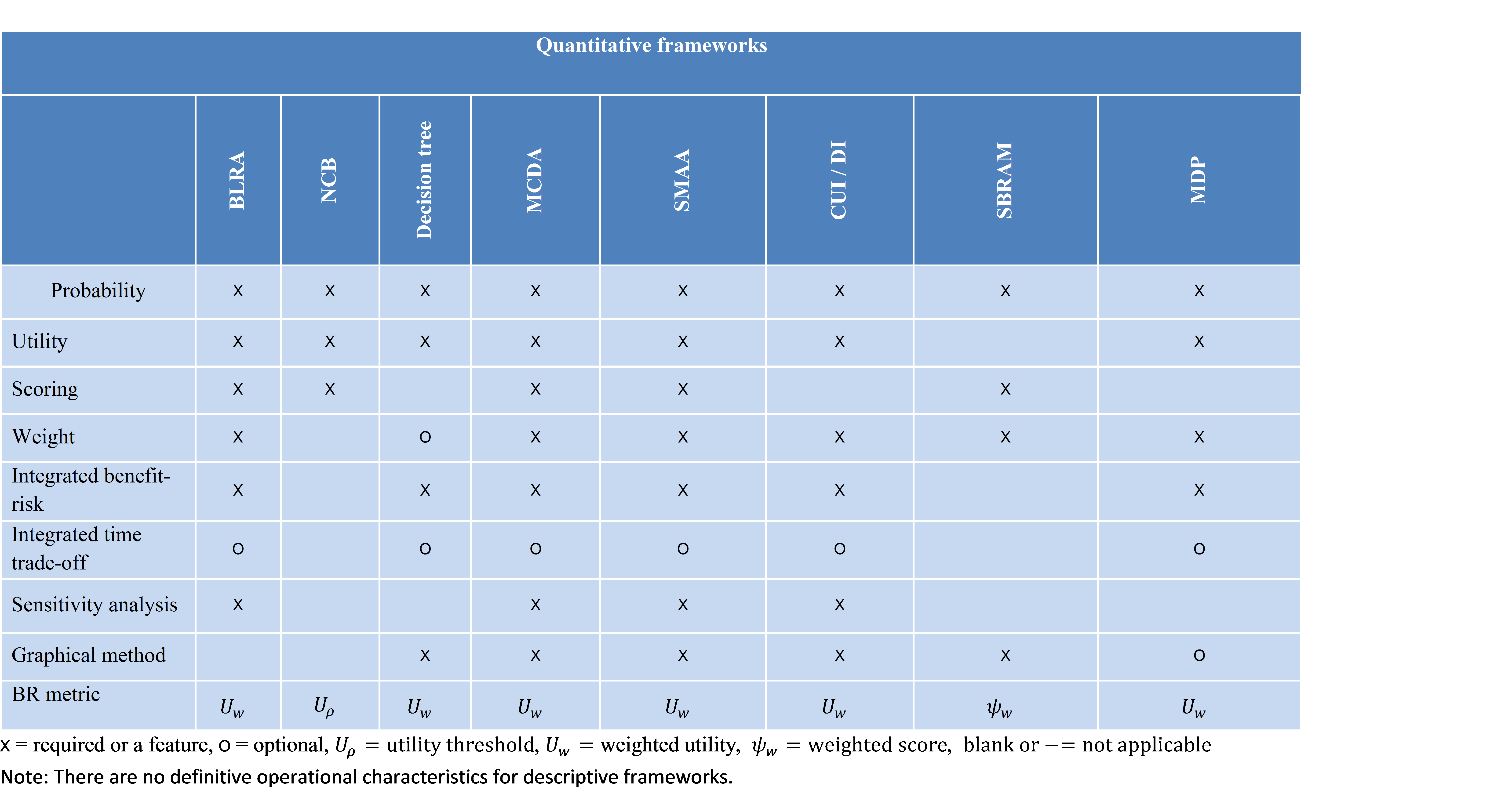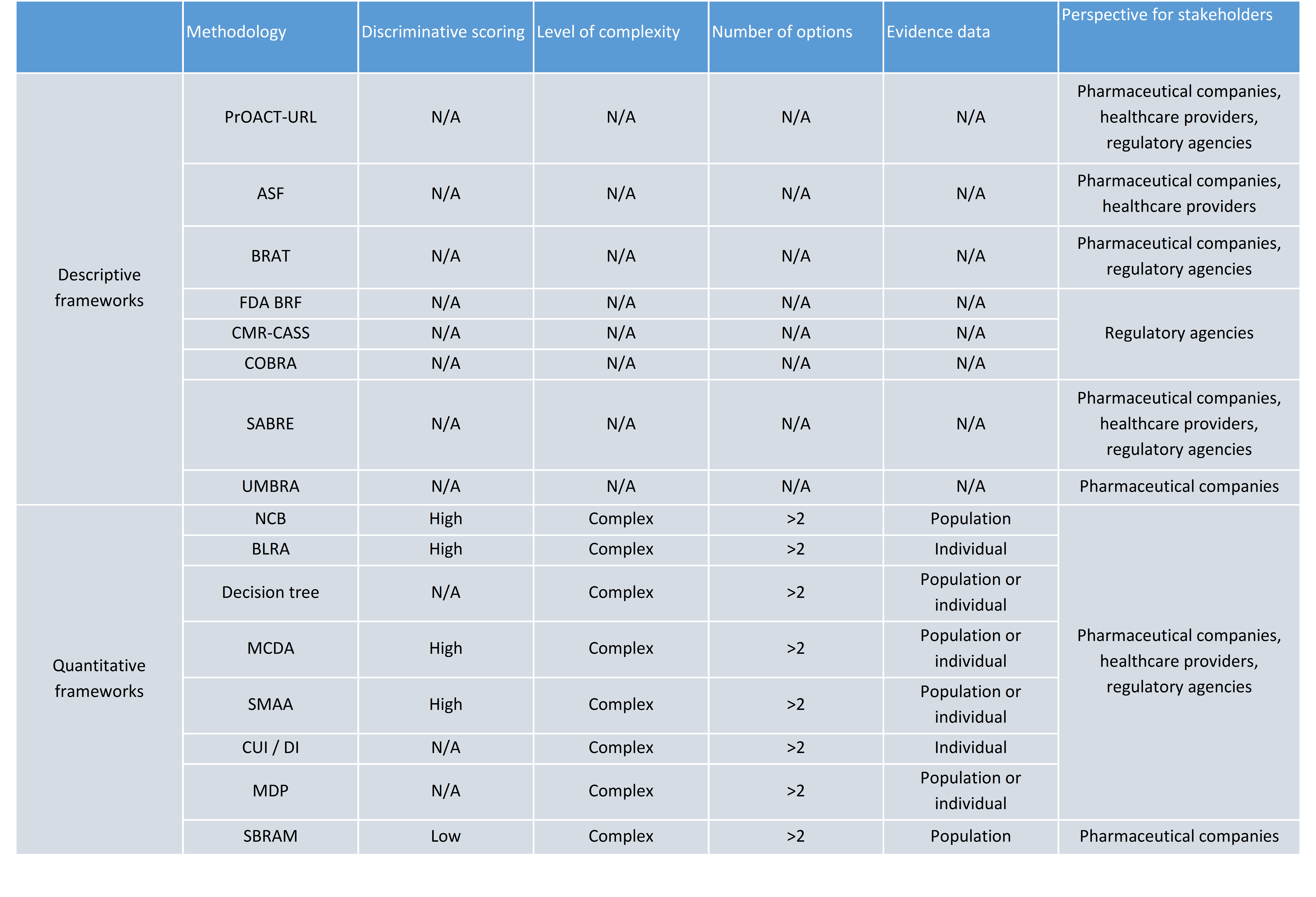Frameworks
Benefit-risk assessment frameworks can be divided into two categories: (1) Descriptive, and (2) Quantitative.
- 1. Descriptive frameworks
2. Quantitative frameworks
- 3. Operational characteristics
These are qualitative or semi-quantitative guidelines to conducting benefit-risk assessment which consist of step-by-step guide to follow for good decision-making practice and to increase transparency. Descriptive frameworks are usually general, and most of the times reiterate common sense.
Due to the nature of descriptive frameworks, there are no operational characteristics and comparative overview of the methodologies fell within this category.
These approaches provide descriptive step-by-step guidelines for the purpose of good decision-making practice and to increase transparency in combination with quantitative methods of trading risks and benefits based on grounded mathematical principle. They depend on the availability of consistent data that allow quantifications and comparisons of different options (treatments) to be made.


Discriminative scoring describes the number of different levels to distinguish the values (performance, preference etc.) associated with the consequences of each option employed by the scoring technique of a method: Low (< 5 levels), Medium (), High ( or on continuous scale), N/A = not applicable Level of complexity describes the technical difficulty in applying and or understanding a method: Simple (low technical difficulty that does not require medical/statistical expertise and does not require specialist software to implement), Medium (mediocre technical difficulty that may need some but not extensive medical/statistical expertise and may require specialist software to implement), Complex (high technical difficulty that requires extensive medical/statistical expertise and may require specialist software to implement). (N/A) = not applicable
Number of options is the number of treatment options that can be compared simultaneously within a method. Typically a method assesses 2 options but it is not sufficient when there are multiple alternative treatments. NA = not applicable.
Evidence data describes whether a method requires individual-level data or could be implemented using population summary data. N/A = not applicable.
Perspective for stakeholders suggests the type of stakeholders, to whom a method may be of interest and or suitable. (N/A)= not applicable.
